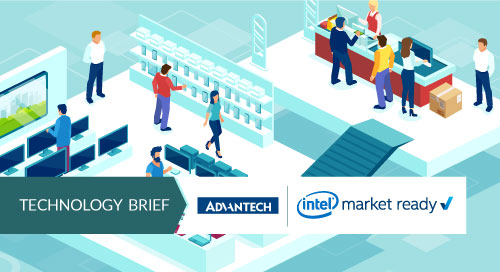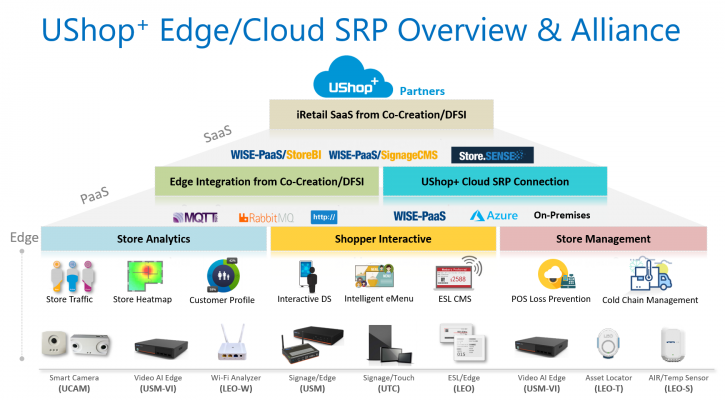Case Study: Real-Time Analytics Boost In-Store Sales

For retailers that sell both online and offline, it can sometimes feel like you’re in competition with yourself. Brick-and-mortar stores provide customer service and the ability to experience the product in person, but customers often go home to make the purchase. Who gets credit for the sale?
Taiwan-based EC Life was experiencing this dilemma firsthand. The video gaming and computer retailer had plenty of foot traffic in its chain of stores, but the conversion rate was low. Customers were coming in to play with the equipment, but they were leaving and placing orders online. Friction between the ecommerce and in-store managers sent EC Life’s general manager looking for a solution to improve in-store sales.
Ecommerce outlets have had an advantage due to strong customer analytics, but advances in facial recognition and AI are leveling the playing field. Instead of relying on human instincts, retail store managers can get real-time access to business intelligence—helping them and their staff close more deals on the spot.
“Many store owners see the cost of rent as a necessary investment for prime locations in certain business districts. But some customers tell us that landlords raise rents due to busy traffic flow. Yet these retailers don’t necessarily see a corresponding increase in revenue,” said Grace Liu, Business Development Manager for Advantech.
Lui said that some store owners experience internal arguments between online and offline business units: “EC Life—one of our long-term partners—wanted to find a better solution to make both departments work together as one company. And the retailer needed a way to help its store managers enhance their performance.”
EC Life chose UShop+, an AI-driven retail management platform from Advantech to help transform its in-store sales. The solution enables data-driven insights to help retailers create personalized customer experiences, improve brand loyalty, drive foot traffic, and increase sales (Figure 1).

Customer Data Provides Valuable Insights
The first step in addressing EC Life’s challenges was installing smart cameras that collect and analyze visitor traffic and behavior.
“Before you can increase your conversion rate, you have to know how many people are inside your store and where they are,” said Liu. “With these two data points, you can take action.”
The EC Life Branch Manager reported how they use the Ushop+ heatmap function to track shoppers. “If 1,000 customers visited the store, but only 20 transactions were made, they can look at the images to understand customers’ paths and interests,” said Liu.
With this information, EC Life can educate its staff on how to do better in leading customers from simply having interest into actual purchasing behavior.
“Before you can increase your conversion rate, you have to know how many people are inside your store and where they are. With these two data points, you can take action.”
@advantechretail @insightdottech
AI Improves Store Efficiency
Instead of resorting to educated guesses, Advantech gives EC Life the insights it needs to improve the efficiency and effectiveness of each store. With the UShop+ mobile app, store managers can review and take action on real-time information, including:
- Numbers of visitors
- Transactions
- Sales volume
- Sales per shopper
- Rate of returning customers
- Average time spent inside store
And UShop+ was integrated with the retailer’s POS system to complete the analytics model, providing comprehensive business intelligence.
Advantech’s Edge Intelligence Servers are deployed in each store. Powered by Intel® technology, these servers provide the performance needed for real-time analytics. The data collected is sent to the cloud for a complete dashboard of all branch stores as shown in Figure 2.

Real-Time Analytics Generate Results
The information gathered through the UShop+ system helped EC Life implement valuable changes. For example, the company had previously awarded store managers bonuses based on monthly sales revenue. Using the data it collected, it set goals based on conversion rate.
“This change influenced the store manager’s behavior,” said Liu. “If the conversion rate was low, the manager could track back and find out who was on staff at that certain time. They could use the heatmap solution to see where customers had spent time in the store. And then they could coach the employee to improve customer service, modifying the sales talk, and teaching them how to perform better next time.”
In just five months, EC Life sales revenue increased by double digits. It improved its inventory management based on interest and engagement, and streamlined costs, such as the number of hourly employees it needed based on traffic.
As the EC Life example demonstrates, technology is giving back brick-and-mortar stores their advantage in the retail arena. Consumers want personalization and best-in-class shopping experiences. Retailers can now deliver by collecting and collating intelligence—online and offline—to provide an omnichannel experience that offers the best of both worlds.
“Everybody is talking about the future trend that more online sales will go offline,” said Liu. “It’s already happening. People still want to see, touch, and try out the merchandise. And more personalized, one-to-one shopping will have a huge impact on the industry. This can happen using the UShop+ solution.”